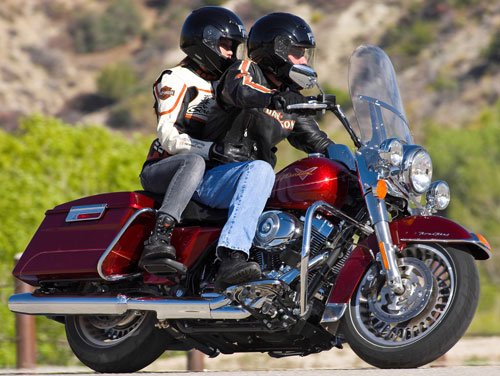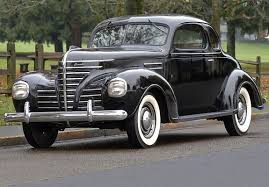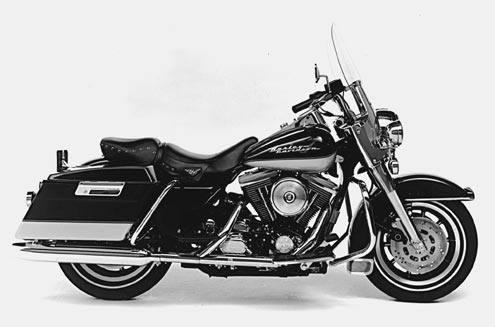Motorcycle Investor mag
Subscribe to our free email news
Profile – Harley-Davidson Road King, first generation

by Guy ‘Guido’ Allen, updated Noc 2021

King of the Road
Harley’s Evolution series Road King has potential as a value-for-money keeper
Unless it has a lot of age to it (we’re talking 50 years or more) picking a used Harley-Davidson can be a bit of a nightmare. The first of a popular or significant series isn’t a bad bet as a long-term collectible, but the issue for any potential buyer is two-fold: 1. Harley makes a baffling array of models, producing ‘special editions’ as often as most people change their underwear; 2. Owners are actively encouraged to modify their bikes from day one, so sometimes it’s hard to work out just what the hell you’re getting.
Something that has long been a source of amazement is just how many models one company can produce from what was essentially just a few engines and frames. In many respects it’s a lesson to other makers on how to keep your line-up looking fresh while dominating a couple of market sectors.
Despite that, if you spend some time sorting the proverbial wheat from the chaff, I reckon you can pick some winners. A few come to mind when Milwaukee’s finest are mentioned and, for me, top of the list is the first series Road King. Far from being revolutionary, it kicked off a new line of machinery that many – including muggins – regarded as the pick of the H-D crop.
In fact, you could track the lineage of the machine back to the first of the FL (touring) series of 1941, powered by a 74ci (1200cc) Knucklehead engine. That powerplant put the Motor Company well ahead of arch-rival Indian, because the Knuckle featured overhead valves, while its Springfield rival made do with a much older sidevalve design.
Move on several decades and we get to 1984, and the release of the Evolution 1340cc powerplant (successor to the Shovel). That powerplant appeared a short time after the company’s management buyout and developed a reputation which saved the company. It was a little smoother and much tougher than its immediate predecessor.
So where does the Road King come in? Move up another decade to 1993 and it’s announced for the 1994 model year. That means early examples are already eligible for club plates in Victoria and will be nation-wide in a few years.
Replacing the Electra Glide Sport (now there’s a lovely oxymoron!), it featured the touring series frame and engine, with air preload suspension, plus removable panniers and windscreen. Twin front discs were standard, and it was running 16-inch wheels with reasonably modest high-profile tyre sizes.
Nothing special? Well, on the face of it, maybe so. And initially the market grossly underestimated this machine. At the time, the Softail series was getting a lot more attention, though it was nowhere near as good as a ride.
My recollection of this first series is hopping aboard and heading interstate, which is what they were built for. There was a fair bit of touring gear on board and meaningful adjustment in the suspension. In fact, it was critical you had enough air in the rear shocks, as the thing could get decidedly ropey unless you had this right.
Roomy and comfortable, the Road King didn’t look or feel like a luxo barge – you still felt as though you were connected to a motorcycle.
Performance was typical H-D for the day. About 60 horses, with good mid-range and surprisingly modest fuel consumption. Around 17km/lt or a little better was typical on the highway for these early carburetor machines.
Handling was good for a cruiser of the time – they’re sharper these days – and quite acceptable if you respected its limits. Flat-out across a mid-turn bump could be an adventure, but semi-sane use was fine and, overall, it handled better than many of its competitors.
Braking was typically gothic, requiring a fair bit of effort on the front lever to haul things up, but was again probably at least average if not a little better.
Apart from the fact they were and remain good mile-munchers (a good backrest will transform it for a pillion), they’re a breeze to look after. Frequent oil and filter change pretty well covers it. It runs solid-state ignition and hydraulic tappets, so the shed duties are minimal. Your only other big task is the occasional adjustment and change of the drive belt.
Evo engines have an enviable reputation for doing very big mileages.
The big upgrade for this series happened pretty quickly, for the 1996 model year, and that was Weber Marelli fuel injection. This was done to meet Californian emission legislation – then among the most strict in the world – without having to resort to catalytic converters…well, at least not yet.
Did it make a big difference? Not huge, but noticeable. Starting was a little more slick and you could convince yourself the motor may have been a touch more willing. Owners reported a slight improvement in fuel consumption, so you could be nudging as high as the 20km/lt mark if you were cruising at highway speeds. You were working with a fuel tank that claimed 18.9 litres, and so had a pretty healthy fuel range.

In 1999, H-D switched over to the Twin Cam 88 1450cc engine (above) – ultimately a better thing, though there were some early reliability and quality issues. Though these later machines were ultimately a better product, for me they’re not as high on the collectible scale.
Here’s why. The first series has a collector appeal of its own – that can be said for any potential classic. Plus, it features the Evo engine, which played an important role in pulling the company back from the brink of bankruptcy.
So what to look for? You could argue the case either way for the carburetor or fuel-injected machines, though I suspect the purists will want the former. In the end, I don’t think it will make a huge difference in long-term value.
Your challenge will be finding one that comes with all or most of the original parts and then working out what to pay for it. Prices have risen substantially in the past year (to Nov 2021). Generally, you should now expect to fork out somewhere around Au$15-20,000 (US$11-15,000, GB£8-11,000) for a good example.
One of the reasons an Evolution series Road King works is, not only does it have long-term collector potential, it’s a genuinely useful and enjoyable motorcycle. And it’s unlikely to cause you mechanical grief. All up, that seems like good value.
***

Road who?
Harley was not the first motoring brand to use the Road King name. Plymouth used it for two and four-door cars in the late 1930s to early forties.
***

Good
Capable tourer
Right brand name
Easy to live with
Not so good
Big and heavy
Values uncertain
SPECS:
HARLEY-DAVIDSON ROAD KING (1994-1998)
ENGINE:
TYPE: air-cooled, two-valves-per-cylinder, 45-degree pushrod V-twin
CAPACITY: 1338cc
BORE & STROKE: 88 x 108mm
COMPRESSION RATIO: 8.5:1
FUEL SYSTEM: 40 Keihin carburetor (or later Weber Marelli injection)
TRANSMISSION:
TYPE: Five-speed, constant-mesh,
FINAL DRIVE: Toothed belt
CHASSIS & RUNNING GEAR:
FRAME TYPE: Steel twin-tube cradle
FRONT SUSPENSION: Conventional telescopic fork
REAR SUSPENSION: Air preload-adjustable twin shocks
FRONT BRAKE: twin discs
REAR BRAKE: single disc
DIMENSIONS & CAPACITIES:
WET WEIGHT: 325kg
SEAT HEIGHT: 749mm
FUEL CAPACITY: 18.9L
WHEELS & TYRES:
FRONT: 16-inch wire spoke (or cast aluminium)
REAR: 16-inch wire spoke (or cast aluminium)
PERFORMANCE:
POWER: 44.7kW (60hp) @ 5000rpm
TORQUE: 102Nm (75lb-ft) at 3000rpm
-------------------------------------------------
Produced by AllMoto abn 61 400 694 722
Privacy: we do not collect cookies or any other data.

Archives
Contact




